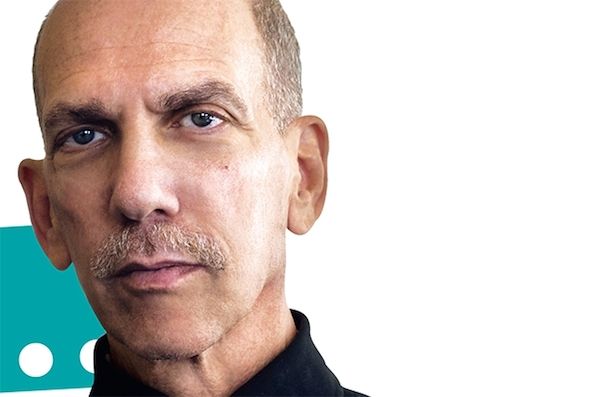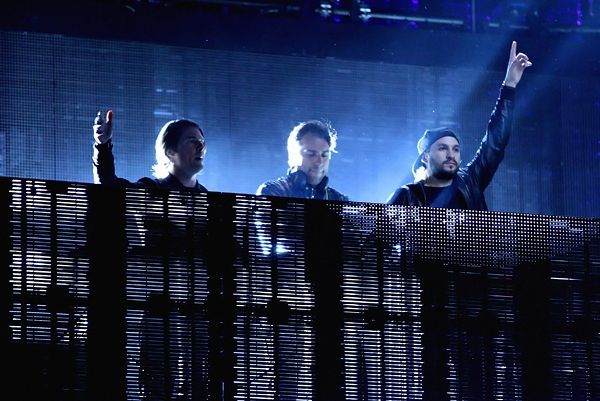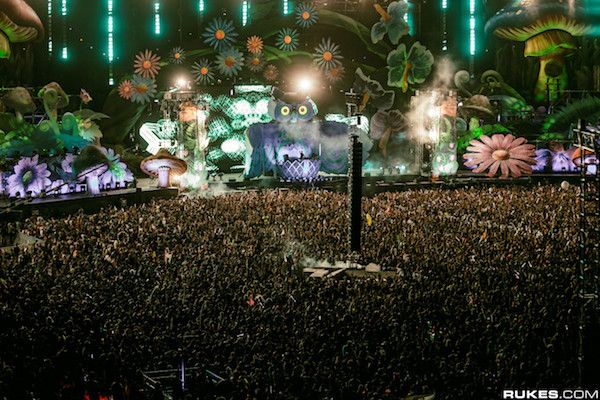
According to Wall Street veteran John Langdon and his company Massive Advisors, LLC, the value of the thriving EDM industry is somewhere in the range of $15 to $20 billion.
Those figures came from the company’s first ever “Massive EDM White Paper”, a market study of the global electronic dance music industry. The study attributes much of this value to the rapid growth of the global festival market, which according to the report has seen a 33% increase in the total number of yearly festivals worldwide, equating to roughly $4.5 billion in sales in 2012 alone.
Another contributing factor is increased revenue from digital music sales and streaming through over 500 different services.
Interested in getting into this booming music industry and knowing you have what it takes to become a music producer? Take the first step by learning to produce with Ableton.
The growth of any major industry is sure to draw the attention of Wall Street, but what’s startling here is the White Paper’s claim that governments and businesses are still largely ignoring what’s rapidly become one of the dominant music scenes.
And EDM fans may not be too happy with the fish-in-a-barrel opportunity Langdon seems to be presenting to potential investors. “If Massive Advisors were to tell you where 3.4 million people will be,” the paper continues, “trapped and captivated for 3 days on average, with a common musical interest and common experience, regardless of destination — who are young, highly inclined toward purchase, technologically facile, with significant disposable income –would you prefer to advertise on a Super Bowl spot or focus your market attention directly toward these 3.4 million people?”
Check out our interview with the Massive Advisors (John Langdon & Nathan Filby):

1) How do you see the EDM industry catering to demographics outside of 18-25, if at all, over the next 18-36 months (independent of price-based exclusivity such as bottle service & VIP)?
John Langdon: Music is eternal. As long as there is electricity, electronic music is eternal. In 2000, there were approximately 9 genres in dance music; in July of 2013 there were 191, a 21x increase. The electricity of electronic music – its ability to re-purpose all types of music into myriad formats that appeal to wider and wider audiences, from down tempo “Chill Out” music to fast paced “Hardstyle,” there are ever increasing entry points for consumers of all ages. For example, Kalm Kaoz, my DJ/Producer group with renowned producer Nathan Filby (aka Motoe Haus), just released a complete “remake” of the Judy Garland track “Get Happy,” a swing time tune from the 50s. I began writing this track with Nathan in an effort to build a bridge to my 82 year old mother’s favorite artist. Although a “Progressive Electro” track, she’s now a big fan!
The pop music machine of the day has little to no impact on the older generations who often stay within their preferred genres from their early years. For example, rock ‘n roll has maintained a powerful long term presence in the global music scene. An algorithm created by our sister company, Massive Advisors, illustrates what we call “Human Digital Interactiveness.” Based upon Last.fm data, our formula shows the aggregate number of unique listeners and plays of tracks and combines it with the number of “tags,” or individuals taking action regarding the content, applied to each genre since Last.fm’s inception and historic API data. Rock ‘n roll tracks have 360,000 unique listeners, with a total of 3.8 million tags. Although in its infancy, electronic music has 504,000 unique listeners and 3.7 million tags. By comparison, Hip Hop has 66k unique listeners and a mere 351,000 tags.
Electronic music will act as a grand bridge builder to all genres of music. Kalm Kaoz, driven by our love of both rock ‘n roll and electronic music, is working to build a bridge to the powerful rock ‘n roll audience. We are shortly releasing three new “remakes,” as we call them, of Jimmy Hendrix’s Crosstown Traffic, Fleetwood Mac’s Second Hand News, and David Bowie’s Ziggy Stardust. We’re also working with a host of old school 60s and 70s rockers to re-purpose their music for the digital age and they’re thrilled with the work. As Johann Smith from BPM Mag, a big rock enthusiast, said after hearing a sneak preview of our Ziggy Stardust track “Kalm Kaoz sent me a private treat – a Ziggy Stardust instrumental they’ve been working on…loving it.”
Perhaps a bridge built.
2) What would be the best method of “investing” in the burgeoning industry? (from a more small potato/regular public kind of viewpoint versus being able to bet hedge funds)
John Langdon: Although there is big money coming into the scene, electronic music will always be a rogue entity and controlling it, in light of technology and the ability to cause Fibonacci-like viral attention, will prove tenuous. It is a highly fragmented market. Understanding technology and how to effectively utilize its power is fundamental for any small investor getting into the game. Virality is the key and technologically wise investments abound in the massive $15 to $20 billion global dance music market. Penetration and ROI can be quite low if one deeply understands the internet and its power. There are great opportunities for small labels or other businesses to grab a piece of a pie that will have ups and downs, but over the next 10 to 15 years will experience 15% compounded annual global growth.
Get creative, understand technology, and get after it!
Filby: The people should invest time and love. This is the most important part of any scene. EDM is a place of light and understanding. Of acceptance and happiness. The simplest reason for us as musicians is to take people on a journey within themselves, to expand our minds and grow as an individual as well as a collective of joyous humans. This is the key.
3) With all this discussion of an EDM bubble… as an investor, how stable of an investment do you think EDM is in the long run?
John Langdon: By my estimation and experience, particularly with analytical chart analysis, the dance music festival market topped about a year and a half ago. We’ve just arrived in Amsterdam and the heart of dance music, Ibiza, seems to have had a tough season. This is of course a leading indicator. I would strongly assume a 15% drop in festival attendance as the big money causes mass saturation of various markets. The UK is a good example – it is a mature market and many 2013 festivals were canceled due to over saturation.
In the European and US markets, you will see this drop and it is healthy. Since 2009, attendance at the top 20 global dance music festivals increased 84%, with the seven festivals completed as of July 2013 increasing a whopping 73.4%. These growth rates are impressive, but not sustainable and in the end are unhealthy, as we’ve seen with the internet, etc. Ticket prices are also up 300% over the same period and this, along with the coming push by the big players to instill the “VIP” culture into European and other markets where it historically hasn’t been a large presence, will turn off many patrons.
I do not see this as a bubble, but rather a market that requires a decline to ferret out the weaker players and make the market a stronger and more stable entity. After a healthy decline, we will see dance music grow again and surpass its highest high.
Finally, dance music and festivals are only just hitting the shores of Latin America, India, Africa, and Asia. Those markets will not experience a decline and will experience robust growth for some time to come. This is why the major festival operators are rushing to build their brands and festivals outside of Europe and the US. These markets will actually be larger and more powerful in the end. Take Africa for example – the digital music economy of $5.6 billion is principally driven by dance music. Africa’s current move toward greater political stabilization is enabling phone operators to deploy robust wireless services (there is little copper deployed underground in 3rd world continents). Digital streaming services will be massive in Africa and will be a game changer, perpetuating the dance music culture.
Filby: People will and have always danced. Dancing is a fundamental part of the human experience. We have done it since the dawn of mankind. Try to see the long arc.

4) Is there a fear that investment in the EDM industry will appear intrusive by fans and receive a negative perception? How do you authentically integrate brands/investors into the scene without alienating the fans?
John Langdon: Ahh, there’s the rub! This question is simply too deep and an article unto itself. There is a master plan afoot by the major players that own the new radio station, aka the festival market, that will likely go unnoticed by the public, but put significant dollars in their pockets while the artists and fans get the raw end of the stick. This is a tale for another time, but after years of executing transactions, I know exactly what the big guy’s long term plan is and, to put it simply, dance music will regress to the mean of the old school recording industry structure. Just think Clear Channel.
In the short term, however, the pricing, push toward VIP services, and abandonment of dance music’s freedom will most certainly cause a backlash.
Always remember, the barriers to entry for a few individuals to go off into a field, throw a rave, and share their music with their raver friends is near zero. Again, the old Wall Street notion of control of distribution channels has changed due to the internet and I believe these players are perhaps a bit myopic on this front.
Music is free, we as fans are free, and dancing the night away is the essence of freedom – money has nothing to do with this essence.
Filby: If it is turned into a hockey rink, yes. If the advertisers, marketers, etc keep an understanding of what the fans WANT in their escape and intertwine outside brands correctly, then the scene can be easily monetized without obvious intrusion. The minute you add McDonald’s style ads within the scene, is the minute the game will become sour. It happened to hip hop and rock.
5) How is the scene going to change when Insomniac’s IPO is declared?
John Langdon: After 23 years of investment experience, analyzing practically every market on earth and thousands of deals, the dance music market construct is a wild anomaly. There are effectively two oligopolies; one in the US and Europe. This is highly unusual and with a relatively small amount of capital, financiers can take control of the festival market with ease. Insomniac/Live Nation will control the US and ID&T/Clear Channel will control Europe.
Sound familiar? Both groups will rush to the new markets and compete there directly. Live Nation and Clear Channel understand each other and know how to fight without disrupting markets and margins (aka, market collusion). The US Justice Department will have little to say on the matter, as they are not a government entity, but rather a third-party. We saw this in action when Live Nation bought Ticket Master.
None of this is good for the fans and highlights that deeper question I mentioned above – the real plan of both entities. This is not about ID&T and Insomniac, but rather Live Nation and Clear Channel.
Filby: Most people don’t care if a company makes a ton of money or not. As long as the creative aspect is nurtured and loved, then I think the scene will just get better and better. Insomniac has done so much good for the scene as well as ID&T and Ultra, They fought for us to be able to share our art with the world. The more the merrier.

6) What is the industry’s 5-10 year forecast and what is the proposed direction to ensure longevity on Wall Street?
John Langdon: I would propose that the global 10-year compounded annual growth rate of the festival market will be approximately 10% to 15%, with a 15% downturn in the short-term offing. Wall Street knows the Live Nation and Clear Channel players and their real plan to increase cash flow. They’ve done it many times before. Its an old play book.
I do think the maverick culture of our beloved dance music will create new forms of experiencing and sharing music and will be a new and powerful variable to an old equation. Underestimating dance music’s roots is a tenuous posture.
7) What does the industry see as the biggest growth opportunity? Festivals? Merch? Exclusive releases? Or is there an inevitable decline, and if so, when/why?
John Langdon: Monetizing the dance music fan base through the internet is clearly the most promising avenue for growth and control. The large entities, however, are not playing for growth as the driver of their success. They fully understand their is a downturn in the offing. This again hints at the real plan of these entities and it is fundamental, historically executed time and again, and a much longer dialogue. Simply put, its about control of distribution channels, control of artistry, and cost cutting. Period.
Filby: Merchandising is always a huge opportunity. Artists and brands are responsible for making sure that merch is appropriate and not corny. Different approaches and utilizing tech to give people a slice of that moment, to remember where you were. There was a movie in the 90’s called “Strange Days” that had this device that would let you re-experience moments and times past vividly like it was happening again. Like a virtual reality that can be shared. I can imagine this being something that would be gigantic.
8) What new or little marketing tactics have arisen over the past few years in the EDM industry?
John Langdon: The internet topples governments. The internet and our maverick culture can certainly keep the big guys at bay.
Growth in APIs is astounding, with only 25 APIs of record in 2008, increasing to 193 in 2013.
Assume music will always be free – as it effectively is today. It is now about ways in which to monetize the dance music fan base without selling music.
We are a powerful force for creativity. Get creative. Leverage the internet.
Fist in the air, we love house music! Fist in the air, long live house music!
Filby: That people want to feel included so remixes are the best ways to open their palates to new music. This is a primary driver for why EDM is so strong.


